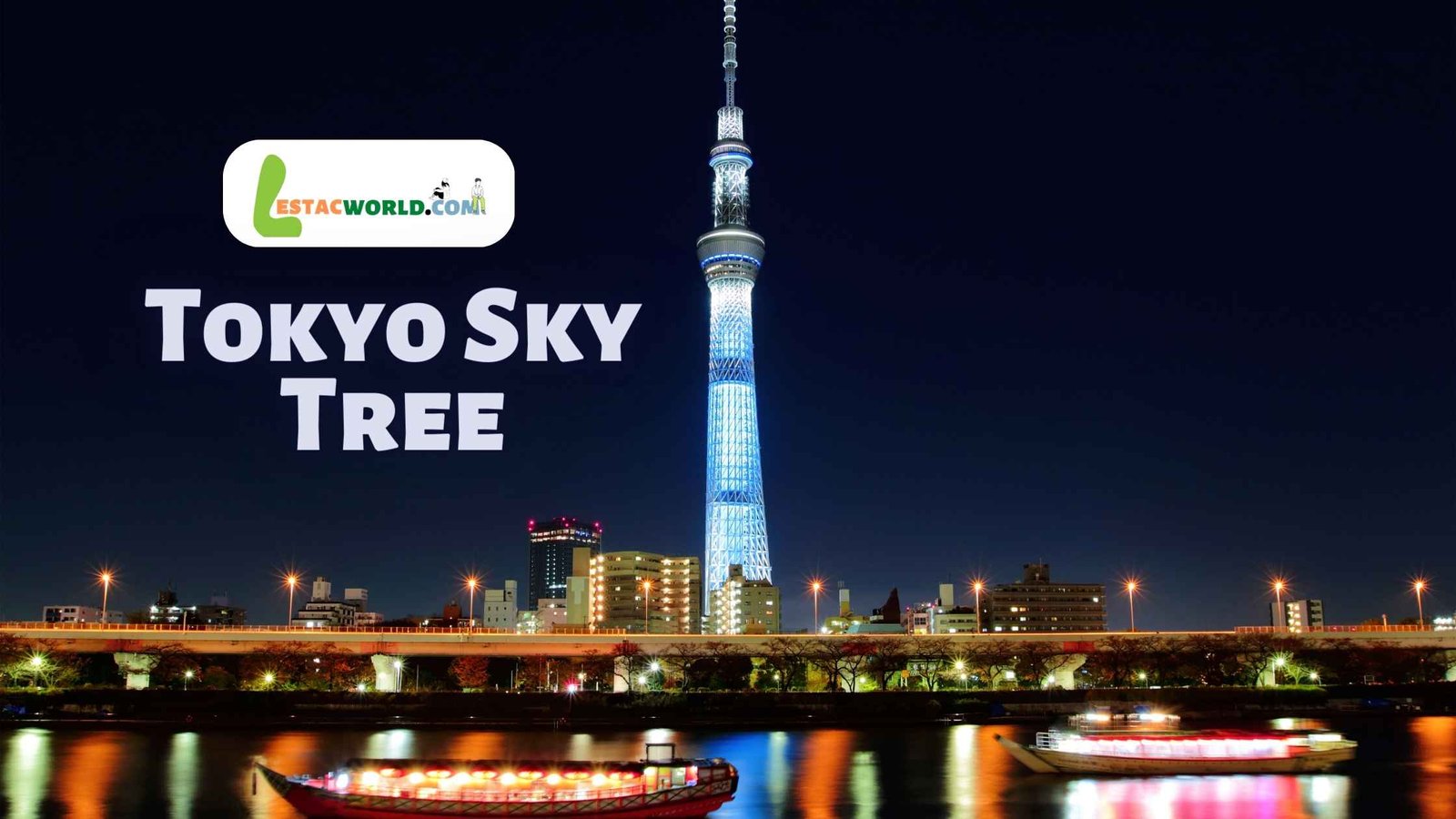About Tokyo Skytree
Important to know about Tokyo Skytree – The broadcasting and viewing tower known as the TokyoTokyo Skytree may be found in the Sumida neighborhood of Tokyo, Japan. It was finished in 2012, and with its present height of 634 meters, it is the construction in Japan that holds the title of being the highest (2080 feet).
Both of the tower’s observation decks, one located at 350 meters and the other at 450 meters, provide breathtaking vistas over Tokyo and the areas that surround it. Tembo Deck is the name given to the lower deck, while Tembo Galleria is the name given to the upper deck of Tembo. The fact that the Skytree contains a variety of restaurants, stores, and other attractions contributes to the fact that it is a well-liked destination for both tourists and locals.
In addition to its function as an observation tower, the Tokyo Skytree is an important component of the city of Tokyo’s broadcasting infrastructure. It is put to use in the process of distributing radio and television signals throughout the wider Tokyo area.
Visitors can access the Skytree by boarding either the Tokyo Skytree Line or the Tobu Skytree Line from either the Asakusa Station or the Oshiage Station stations on their respective rail networks. The observation tower is open from 8:00 AM to 10:00 PM every day of the week, with extended hours on weekends and holidays. The observation decks are accessible after paying the appropriate price, and tourists are strongly encouraged to do so in order to avoid standing in line for an extended period of time.
History of Tokyo Skytree
The rising issue of Tokyo’s increasingly antiquated communication infrastructure prompted first discussions in the 1990s that led to the conception of the Tokyo Skytree as a potential solution to the problem. It became increasingly difficult for the city’s already-existing towers to successfully transmit television and radio signals as the city’s population and skyline continued to expand. This problem was intended to be remedied by the construction of the Tokyo Skytree, which features a platform that is both stable and reliable for the transmission of signals to the broader Tokyo area.
2008 marked the beginning of construction on the Skytree, and the skyscraper was finally finished in 2012. After it was finished, it surpassed the CN Skyscraper in Toronto, which was the previous record holder for the tallest freestanding tower in the world. The CN Tower is located in Canada. The Skytree immediately established itself as a prominent destination for vacationers, and it now welcomes millions of guests annually who come to take advantage of its observation decks, retail outlets, and dining establishments.
In addition to its function as a broadcast tower, the Tokyo Skytree has emerged not only as a symbol of contemporary Tokyo but also as a wellspring of national pride. Because of its one-of-a-kind appearance, which was motivated by traditional Japanese architecture and culture, the tower has become a well-known icon and is consistently among the most photographed buildings in the city. The Tokyo Skytree remains both a popular place for tourists to visit and a symbol of the city’s continued innovation and advancement.
How to Reach Tokyo Skytree
You can easily access the Tokyo Skytree via a number of public transit methods:
- Train: The Tokyo Skytree Station, which is served by the Tokyo Metro Hanzomon Line and the Tobu Skytree Line, is the station closest to the Skytree. The base of the Skytree is just a short stroll from this station.
- Take the subway to Oshiage Station, which is served by the Hanzomon Line and the Asakusa Line, as an alternative. The Skytree is a short stroll from Oshiage Station.
- Bus: Several bus routes, notably the Toei Bus and the Tobu Bus, stop close to the Skytree.
Regardless of the mode of transportation you pick, the Skytree is well-marked and simple to locate. The Skytree can be highly busy, especially during the busiest travel seasons, thus visitors are urged to plan their journey in advance and leave plenty of time for travel.
Do's and Dont't at Tokyo Skytree
Here are some do’s and don’ts to keep in mind when visiting the Tokyo Skytree:
Do’s:
- Purchase tickets in advance to avoid long wait times.
- Wear comfortable shoes, as there is a lot of walking involved.
- Respect the quiet and peaceful atmosphere of the observation decks.
- Follow the rules and regulations for taking photographs and using the observation decks.
- Enjoy the views of Tokyo from the observation decks.
Don’ts:
- Don’t bring large bags or luggage, as they may not be allowed on the observation decks.
- Don’t engage in any inappropriate or disruptive behavior.
- Don’t run or push others on the observation decks.
- Don’t take food or drinks onto the observation decks.
- Don’t litter or leave any trash behind.
By following these simple guidelines, you can ensure that your visit to the Tokyo Skytree is enjoyable and safe for everyone.
What type of View is expected from Tokyo Skytree
Visitors to the Tokyo Skytree can expect to see stunning views of the city and surrounding area from the observation decks.
The lower deck, known as the Tembo Deck, provides panoramic views of Tokyo, including the neighboring Sumida River and the Asakusa and Ueno districts. Visitors may see Mount Fuji in the distance on a clear day.
The top deck, known as the Tembo Galleria, has even better views of the city. Visitors may see the whole Tokyo metropolitan area from this platform, including the city’s bustling streets, buildings, and parks.
Visitors can enjoy a variety of interactive displays and exhibitions that provide knowledge about the Skytree and its part in Tokyo’s history and growth, in addition to the vistas.
Overall, a trip to the Tokyo Skytree offers a one-of-a-kind and spectacular perspective of one of the world’s most fascinating cities.
What is the best time to visit Tokyo Skytree
When you should go to the Tokyo Skytree most effectively depends on a number of aspects, such as the season as well as your own individual preferences.
It is recommended to visit the Skytree either early in the morning or later in the evening, when the sun is low in the sky and the city is lit up, as these times offer the best views of the city. This is especially important to keep in mind during the summer months, when the sun can be rather intense and the haze can make it difficult to see clearly.



Comment (0)